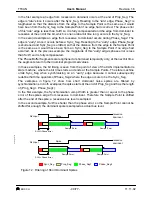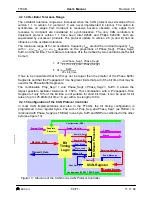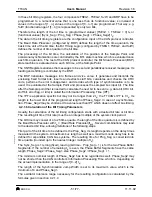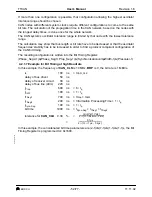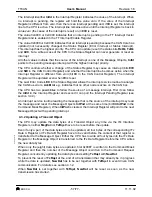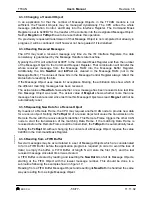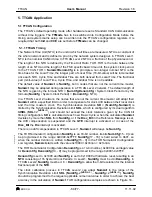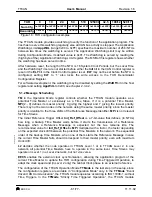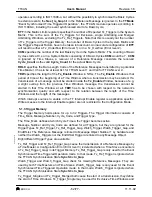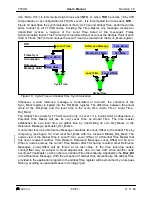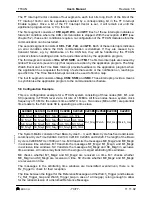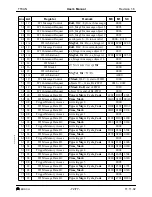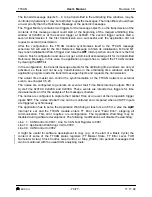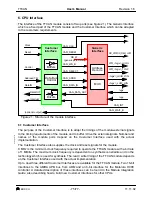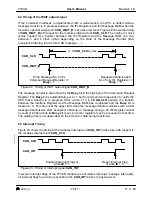
User’s Manual
BOSCH
- 61/77 -
Revision 1.6
TTCAN
11.11.02
manual_about.fm
Figure 18: TUR configuration examples
The TTCAN module provides a watchdog to verity the function of the application program. The
host has to serve this watchdog regularly, else all CAN bus activity is stopped. The Application
Watchdog Limit AppWdL (range 0x00 to 0xFF) specifies the maximum number of 256•NTUs
between two times the watchdog is served. The Application Watchdog Limit may be written
during Configuration Mode, its default value is 0x01. The Watchdog is served by reading the
(high byte of the) Application Watchdog Limit register. The MSB of this register shows whether
the watchdog has been served in time.
After hardware reset, the length of the NTU is 16 System Clock Periods, but the Local Time
and the Watchdog Timer are not started before either the Init bit in the CAN Control register is
reset or the ELT bit in the Clock Control register is set. ELT may not be set before the NTU is
configured, setting ELT to ‘1’ also locks the write access to the TUR Denominator
Configuration Register.
For software development, the watchdog may be disabled by setting the WdOff bit in the Test
register and setting AppWdL to 0x00, see chapter 2.3.4.2.
5.1.2 Message Scheduling
TM in the Operation Mode register controls whether the TTCAN module operates as a
potential Time Master or exclusively as a Time Slave. If it is a potential Time Master,
MPr[2
…
0] defines its master priority, 0 giving the highest and 7 giving the lowest priority.
There may not be two nodes in the network using the same master priority, since the master
priority is identical to the three LSBs of the Reference Message Identifier. MPr is not relevant
for Time Slaves.
The Initial Reference Trigger Offset Init_Ref_Offset is a 7-bit-value that defines (in NTUs)
how long a backup Time Master waits before it starts the transmission of a Reference
Message when a Reference Message is expected but the bus remains idle. The
recommended value for Init_Ref_Offset is MPr multiplied with a factor, the factor depending
on the expected clock drift between the potential Time Masters in the network. The sequential
order of the backup Time Masters, when one of them starts the Reference Message in case
the current Time Master fails, should correspond to their master priority, even with maximum
clock drift.
L2 decides whether the node operates in TTCAN Level 1 or in TTCAN Level 2. In one
network, all potential Time Masters have to operate in the same level. Time Slaves may
operate on Level 1 in a Level 2 network, but not vice versa.
EECS enables the external clock synchronisation, allowing the application program of the
current Time Master to update the TUR configuration during Time Triggered Operation, to
adapt the clock speed and (in Level 2 only) the Global Clock phase to an external reference.
The configuration of the TTCAN Operation Mode TTMode is the last step in the setup, since
the configuration registers are writable in “Configuration Mode” only. In the TTMode “Event
driven CAN Communication”, the TTCAN module operates according to ISO 11898-1, without
Time Triggers. In the TTMode “Strictly Time Triggered Operation”, the TTCAN module
TUR
8
10
24
50
510
125000
32.5
100/12 529/17
NumCfg
0x1FFF8 0x1FFFE 0x1FFF8 0x1FFEA 0x1FFFE 0x1E848 0x1FFE0 0x19000 0x10880
DenomCfg
0x3FFF
0x3333
0x1555
0x0A3D
0x0101
0x0001
0x0FC0
0x3000
0x0880



